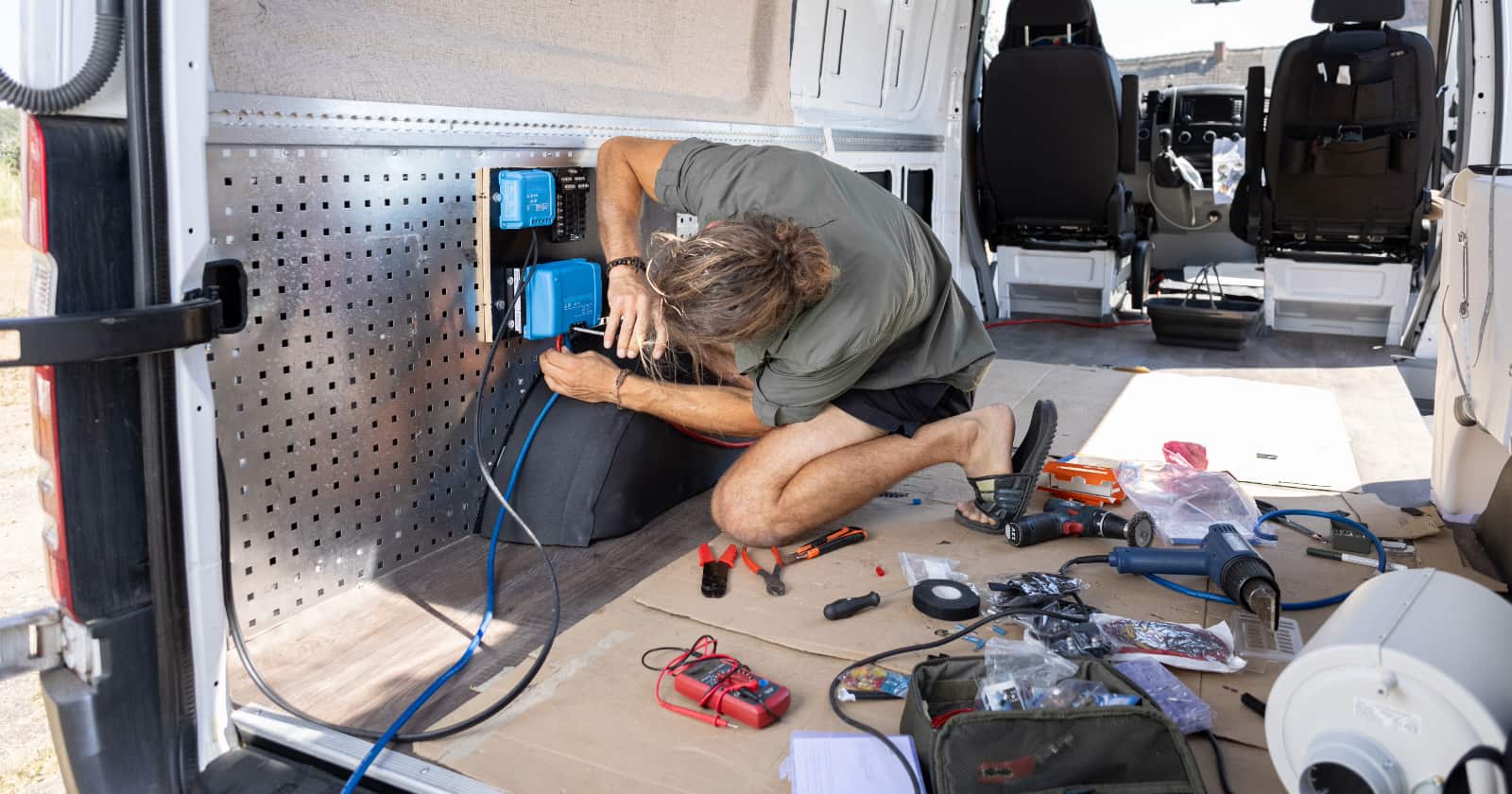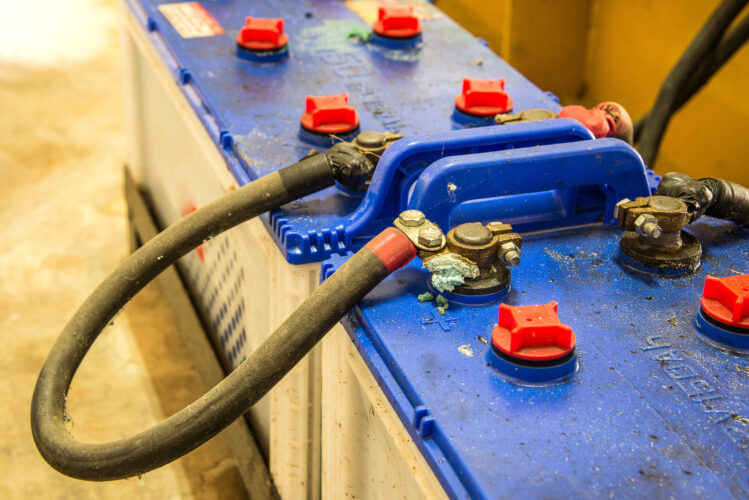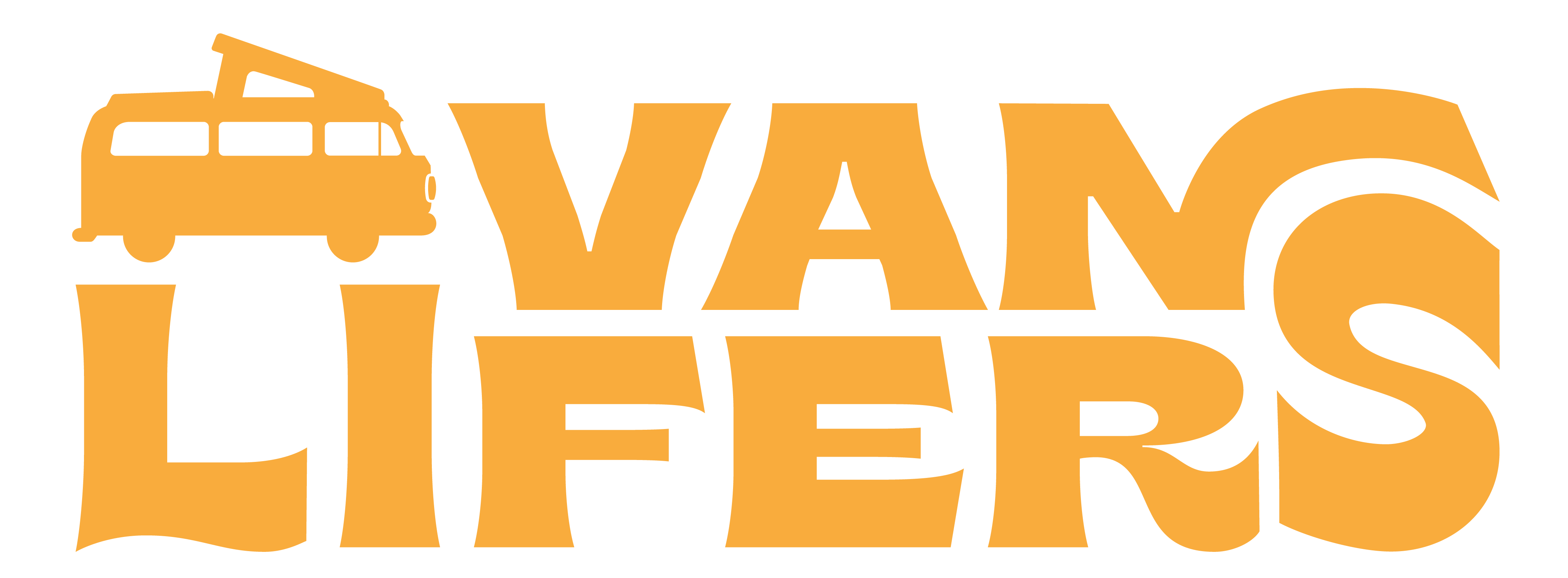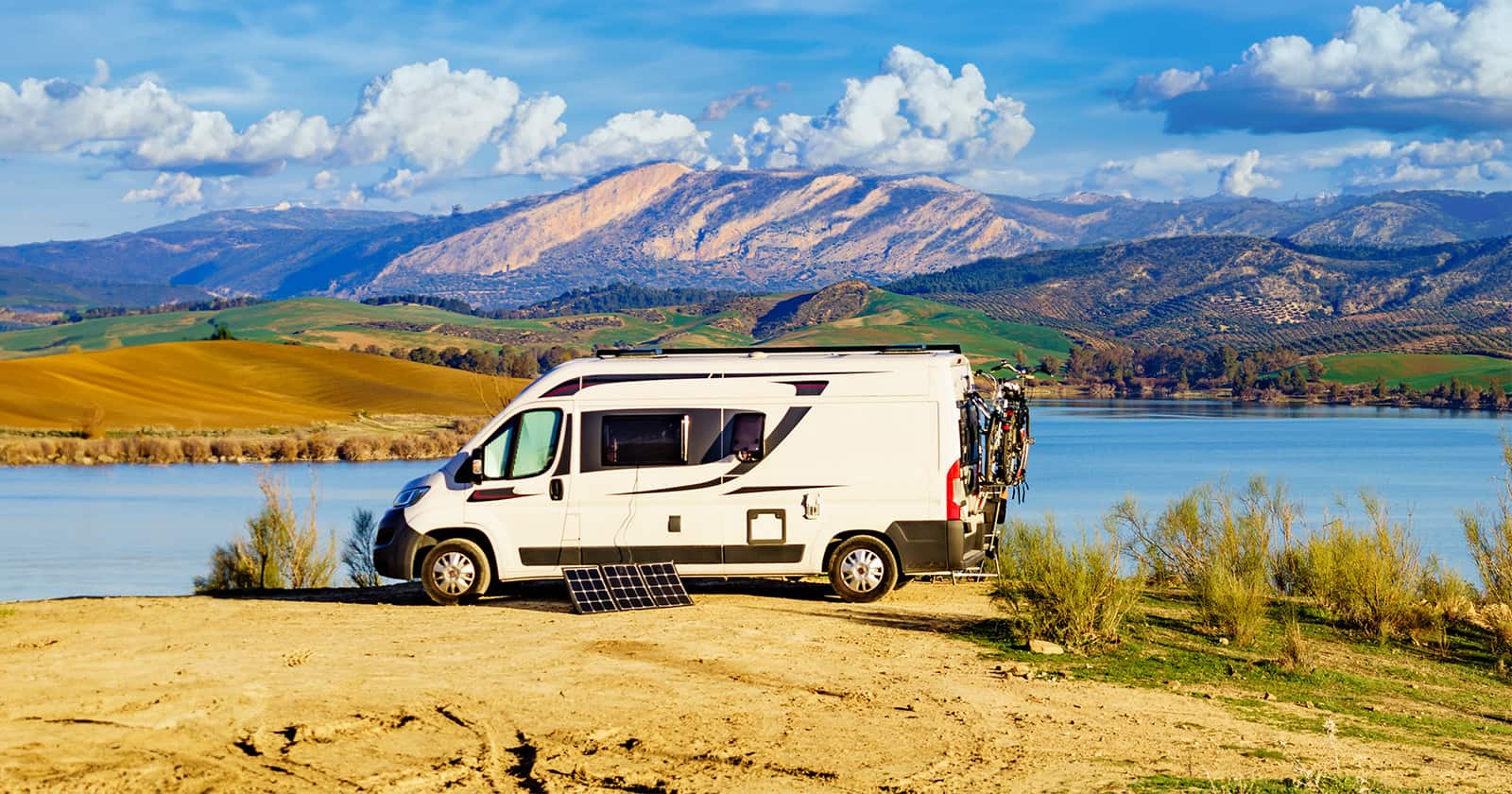There’s a growing class of off-grid Americans looking for better ways to establish reliable power sources and sustain their lifestyles away from modern conveniences. Solar and high-end lithium batteries are the mainstay these days, but wind turbines just might fill that void that all solar power enthusiasts have to deal with when the clouds roll in and the sun goes down.
Understandably, you probably have a lot of questions. Fortunately, we’re going to stuff our expertise in renewable energy, comparability, and viability into your skull, so you can make the most informed decision.
What Are Campervan Wind Turbines?
Campervan wind turbines are nothing more than small windmills that you set up on the ground outside or attach directly to your Class B. Most designs are the kind you can mount, especially if you have a ladder.
As the wind blows and the blades spin, it creates energy, with the turbine connecting to a charge controller. Other than the difference between a solar panel and a wind turbine, the setup is roughly the same. Some wind turbines feature designs that allow them to tie into your solar system, providing RVers with the best of both worlds.
Benefits And Challenges Of Campervan Wind Turbines

Gas and diesel aren’t cheap. More RVers are seeking out new ways to harness affordable energy without pouring $3+ per gallon into generators. Solar remains the mainstay option, especially where affordability and simplicity are concerned. Nowadays, setting up a fold-out solar panel or bolting one to your class B is an easy DIY project.
Here’s the thing, both wind and solar have their pros and cons. However, most of the time, when it’s not sunny outside, wind comes into the picture. Whether that makes campervan wind turbines a great supplemental resource or a replacement is what we mean to answer.
Challenges
Wind turbines for campervans are not the large, robust turbines you see on TV. They’re much smaller and, as such, more vulnerable to the elements. Huge gusts of wind or nasty thunderstorms are capable of knocking a turbine over or damaging it.
Not only is a wind turbine dependent on the wind, but its energy output is determined by the strength of the wind. The stronger the wind blows, the closer the turbine will get to its maximum output. A weak wind, though it might generate some output, will not take advantage of the maximum the wind turbine has to offer.
Then there’s the parking aspect. You have to park your campervan in places where trees won’t shield you from the wind. You might get wind from the east today and from the west tomorrow. If the trees are situated to the west, you’ll have to turn your wind turbine or the campervan the next day.
The good news is there are plenty of wind turbines on the market that feature omnidirectional blades, taking advantage of the wind regardless of the direction. Last but not least, a wind turbine sticking up high in the air during a thunderstorm will attract lightning.
Benefits
Wind turbines have a higher output than solar panels. However, that output is dependent on the wind. The better you are able to take advantage of the wind, the easier it will be to get the most out of your wind turbine. Overall, expect to get similar outputs when everything averages out.
According to the Battle Born Batteries site, power output heavily depends on wind speed, increasing with the square of the wind speed. At half the optimal speed, output drops to a quarter, meaning a 400-watt turbine might only produce 100 watts in 14 mph winds.
One of the best advantages of wind turbines is their continuous power generation. As long as it’s windy, the turbine will continue generating power, day or night, rain or shine. In a strong 28-mile-per-hour wind, a mid-range turbine (costing around $500) can generate about 400 watts of power.
Routine maintenance is a requirement, but you will generally get a long lifespan out of the deal. Most wind turbines come with 1 to 5-year warranties as well.
Campervan Wind Turbines Pros and Cons
| Pros | Cons |
|---|---|
| Portable wind turbines set up and dismantle quickly | Set up and dismantle is a necessity and takes longer than solar setups |
| Dismantled, they are easy to store away | Requires a higher degree of maintenance |
| Produces energy in the day, at night, with cloud cover, and during rainstorms (so long as there is wind) | The wind doesn’t always blow |
| Produces power from wind speeds as low as 6 mph | |
| More powerful as a battery charging source | |
| Higher energy output |
There’s still a long way to go before wind energy is up there with solar, but there are some good reasons to consider wind as a viable alternative or supplement.
Set up and take down is relatively simple, though solar is much easier because, most of the time, it’s already on your roof, or you simply have to unfold a panel on the ground. Wind turbines are quick and easy to assemble, but it definitely takes longer and includes more steps.
For those living off the grid and not moving around a lot, a one-time setup is ideal. Obviously, there are more moving parts on a wind turbine, so a higher degree of maintenance is necessary. This is especially true if you want to keep the noise down. Wind turbines get loud and annoying when not properly maintained.
Wind Versus Solar Comparison
The best way to properly represent the benefits and drawbacks of campervan wind turbines is to compare them to the much more popular solar setups. A bird’s eye view, so to speak. Of course, any direct comparison comes with the caveat of understanding the unpredictability of weather.
| Wind Turbine | Solar Panel | |
|---|---|---|
| Average Cost | $200 to $4,000 | $400 to $2,000 |
| Maintenance Requirements | Routine and preventative maintenance required | Little to no maintenance is necessary |
| Warranty Coverage | 1 to 5-year warranties | 1 to 10-year warranties |
| Output (1) | 18W Wind Turbine = 432 Watt-Hours | 60W Solar Panel = 390 Watt-Hours |
| Output (2) | 60W Wind Turbine = 1,440 Watt-Hours | 120W Solar Panel = 1,560 Watt-Hours |
| Positioning | Positioning dependent on blade-type | Positioning to catch the rise and fall curve of the sun is best |
| Use | Useable at all times of the day, so long as there is wind | Roughly 6.5 to 7 hours and nothing on a cloudy day |
As you can see, both wind and solar power are situational, with wind turbines benefitting more from the weather circumstances, but only if you happen to be in a perpetually windy area or there happens to be enough wind to drive your turbine.
Are Campervan Wind Turbines More Efficient Than Solar?

Whenever there is wind, and the wind is consistent, a wind turbine is more efficient. The truth is, if you live off-grid or spend a lot of time boondocking, a wind turbine makes a great companion power source. Instead of viewing this through a lens of “this or that”, think of wind turbines as an effective addition to your power needs.
Be careful, though. Not all wind turbines feature designs that tie into an existing solar setup. Be sure to look for one that accommodates rather than standing separate. Also, look for omnidirectional blade wind turbines, or replacement omnidirectional blades for existing systems. This will ensure that your turbine spins no matter the wind direction.
Excellent Wind Turbine Choices Available on Amazon
Pikasola Wind Turbine Generator Kit 400W 12V

Features: Starts at 2.5m/s low wind speed, low vibration, high wind energy efficiency, longer blades, three-phase permanent magnet synchronous motor, automatic yaw adjustment system, real & actual parameters.
Pros: Efficient in low wind, lightweight and durable, weather and corrosion-resistant, advanced safety features.
Cons: No instruction manual, requires some technical understanding.
Link: Amazon Link
LIANDU-US Wind Turbine Generator Kit 450W DC 12V Vertical

Features: High-strength FRP material, glass fiber blade, 3-phase AC PMG, low start torque, intelligent microprocessor for current and voltage regulation, generating electricity at lower wind speeds.
Pros: Efficient power generation, durable and quiet operation, suitable for various applications, easy installation.
Cons: Limited user reviews available.
Link: Amazon Link
Final Thoughts
Campervan wind turbines aren’t ready to usurp solar power’s throne just yet. However, they’re growing in popularity, especially as a supplemental source of power on cloudy days and throughout the evening hours when solar just isn’t viable.
The main thing to take away from all of this is that wind power is efficient. With a little forethought and careful consideration of your setup, you will effectively double or triple your power resource. Wind turbines may not be the end all be all of the renewable energy needs, but they offer a significant power upgrade to your existing set-up.


